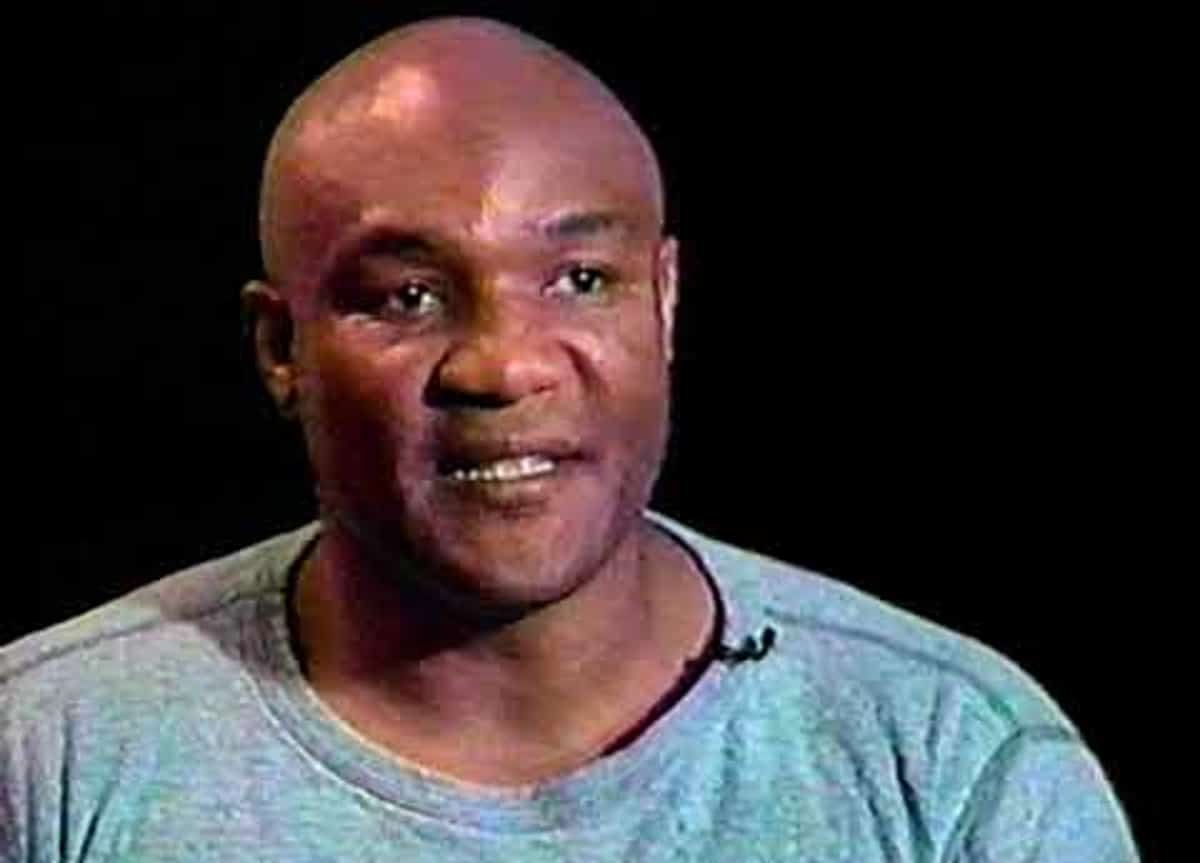You guys have most likely seen by now the George Foreman movie: “Big George Foreman: The Miraculous Story Of The Once And Future Heavyweight Champion Of The World.” Finally getting around to it, as I did this week, there are, sad to say, no real regrets in failing to catch the premiere. It’s not that the film is a bad one, not at all. It’s just that there is too much of the good stuff missing. Which might sound odd considering how there is so much information crammed into the 2-hour, nine-minute movie.
Foreman, we know, has lived one heck of an eventful life – and the movie tries its best to cover it all. From those early, impoverished days living in Houston’s “Bloody Fifth” (this segment of the film giving us a watered down version of the teen Foreman’s hard life, absent the story of how a drunk on cheap wine Foreman beat up a good friend so badly yet failed to even remember it the next day, this event sending a shocked to his core “Big George” into the life of a teetotaller), to the Job Corps programme that pretty much saved Foreman’s life, to his unimaginably rapid progress from raw, wannabe boxer to Olympic gold medal winner, to world heavyweight king, to a depressed loser to the one and only Muhammad Ali.
Yes, the movie sure covers it all. But by the numbers. Where is the passion, the passion, and the rage – rage over not being accepted or, more importantly to the great man himself, respected by the world – in the film? It’s just not there.
Talking of what’s not there, aside from a blink-and-you’ll-miss-it appearance by Sonny Liston (portrayed by Cedric Boswell), the mean and inspirational former heavyweight champ, who laid it all down for the young Foreman as far as how to behave when you’re the baddest man on the planet, doesn’t get a look in. Neither does Don King. Now, the Ali-Foreman fight is dutifully and painstakingly recreated, yet surely the man whose wild and crazy brainchild the whole thing was in the first place should have been featured in the film?
Even less forgivable, is the complete omission of Foreman’s ever so crucial fight with Ron Lyle. As Foreman’s fans know, this fight – one that saw Foreman exorcise a good deal of the demons that haunted him after not doing his best (in his own tortured mind) against Ali, with Foreman getting up from two hurtful knockdowns, the fighter having a genuine kill or be killed attitude – paved the way for the incredible comeback to come.
In short, without proving to himself what he proved in the Lyle fight (always a feature in anyone’s greatest ever slugfests list) Foreman would not have been able to do what he did in the 1990s. All films are restricted due to a running time, yes, but there should have/could have, surely, been some room found for the epic from January of 1976. Foreman himself is perhaps prouder of his efforts in the Lyle fight than of any he made in his other ring battles. One can almost picture Foreman being annoyed that this fight was omitted from the movie.
But then George is executive producer. Are we to believe Foreman didn’t okay everything in the film, and everything absent from the film? Maybe this was one of the problems, with Foreman’s dominant presence being such a force in the making of the film seeing to it that some unpleasant, but human, elements were cut from the story. There is certainly no mention of three of Foreman’s five marriages, only of his first and last. As with the “Ali” film from 2001, this made when Ali was still very much alive, we get a genuine sense that Foreman’s movie would have been far more hardcore, realistic and a warts and all offering had the big man not been there to oversee things. In terms of big, glossy biopics devoted to them, Ali and Foreman are now very much 1-1.
The final half-hour is possibly the most enjoyable part of the movie, with Foreman’s astonishing comeback playing out in all its stunning glory. We could have done without actor Khris Davis (who does a brilliant job as both the young Foreman and as Foreman mark-two) having his face superimposed over that of the real Foreman as real-life footage of the Foreman-Evander Holyfield fight runs (if the director wanted to use real-life fight footage, okay, but why George Tillman Jr did so for the 1991 fight only is a frustrating mystery). Also, if we wish to nitpick, the great Angelo Dundee, who aided Foreman greatly in the corner during the climatic, title-reclaiming Michael Moorer fight, is treated pretty disrespectfully in the film, with him being pretty much glossed over.
The end credits, where we see photos of the legends portrayed in the film – Foreman of course, Ali, Archie Moore, and more – give viewers the best tingles of all. And that can’t be a good thing, can it?
In a nutshell, “Big George Foreman” is a good film that could have been a great film.
